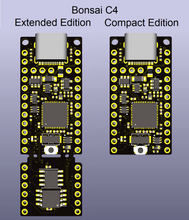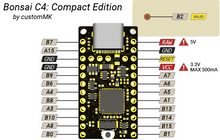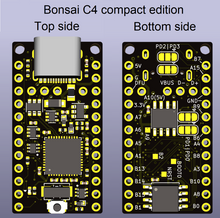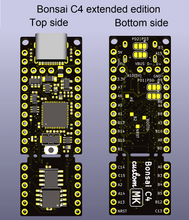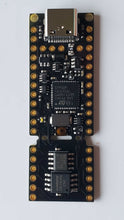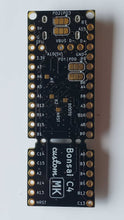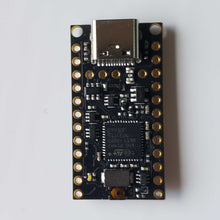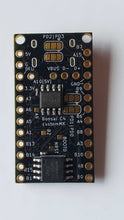
Imagine a ProMicro with faster keyboard matrix scanning, plenty of memory for controlling color displays, and up to 32 keymap layers in VIA/Vial.
Introducing Bonsai C4, a high performance drop-in replacement for the ProMicro. Bonsai C4 is an open source STM32F411CEU6 microcontroller board with:
- USB-C
- ARM-based microcontroller
- 96MHz (when using USB)
- 512kB program flash memory
- 128kB RAM
- 8kB of FRAM on-board (for storing configuration settings)
- 16MB of flash storage on-board
- Reset circuit on-board

STM32F411 includes a built-in USB bootloader, so all you need to start flashing firmware onto it is a USB-C cable.
If you are using Bonsai C4 for split keyboards, we've included solder bridges to easily modify the soft serial pin assignments as needed.
The circuitry for both the extended and compact editions are identical, however the compact edition places the FRAM and flash chips on the back side of the PCB and is the same length as a ProMicro. The extended edition has all the components on the top side of the board and makes more pins available, but results in a longer PCB than the ProMicro (note: extended edition is the same length as the Proton C). For existing keyboard designs that only have the space for a ProMicro such as Kyria, Sofle, Lily58, etc. the compact edition ensures physical compatibility without compromising performance.
Why Choose Bonsai C4 over a ProMicro?
Bonsai C4 offers a significant increase in performance compared to ProMicro. In addition to the metrics of higher pin count and higher operating frequency, the extra program memory on the microcontroller means you won't have to disable features to make your firmware fit within the limited 32kB space offered by a ProMicro. As QMK grows to be even more feature-rich in the future, firmware that used to fit on a ProMicro may suddenly find itself unable to compile small enough to fit unless firmware features are disabled. But with 512kB of program memory on the microcontroller used in Bonsai C4, you will have more than enough space for every feature you might want in a keyboard.
As custom mechanical keyboard capabilities expand to regularly include OLED displays, LCD displays, and audio effects, the memory needed to store even simple animations and sounds rapidly exceeds the storage capability of a ProMicro. But with the 16MB on-board flash memory, Bonsai C4 offers much more storage to hold a variety of media (like bongocat--in colorful high resolution!). 16MB represents a 500x increase over the entire flash memory capability of a ProMicro--and that 16MB doesn't even include the program memory itself.
Bonsai C4's on-board FRAM (for storing dynamic keymaps and other configuration settings) also offers significant improvement over the EEPROM in a ProMicro. The configuration storage memory is larger, the writes are faster, and the number of writes it can survive is ridiculously high (1 trillion writes).
The default Pro-Micro as-shipped requires a rapid double-press of the reset button to enter bootloader mode for flashing new firmware, whereas a simple, single press of reset for Bonsai C4 consistently and reliably enters bootloader mode. Furthermore, the USB bootloader in Bonsai C4 is permanently programmed into the microcontroller, meaning there is no way to accidentally overwrite the bootloader.









